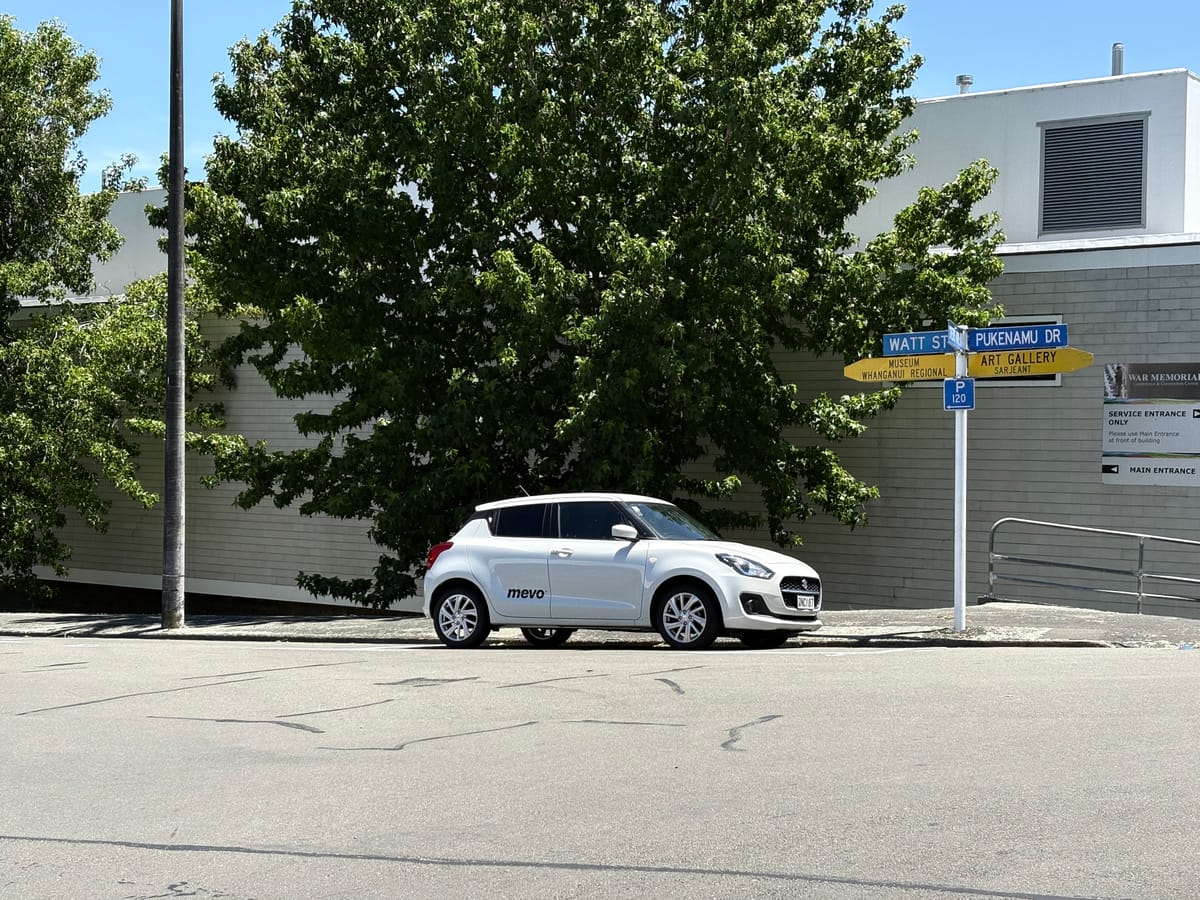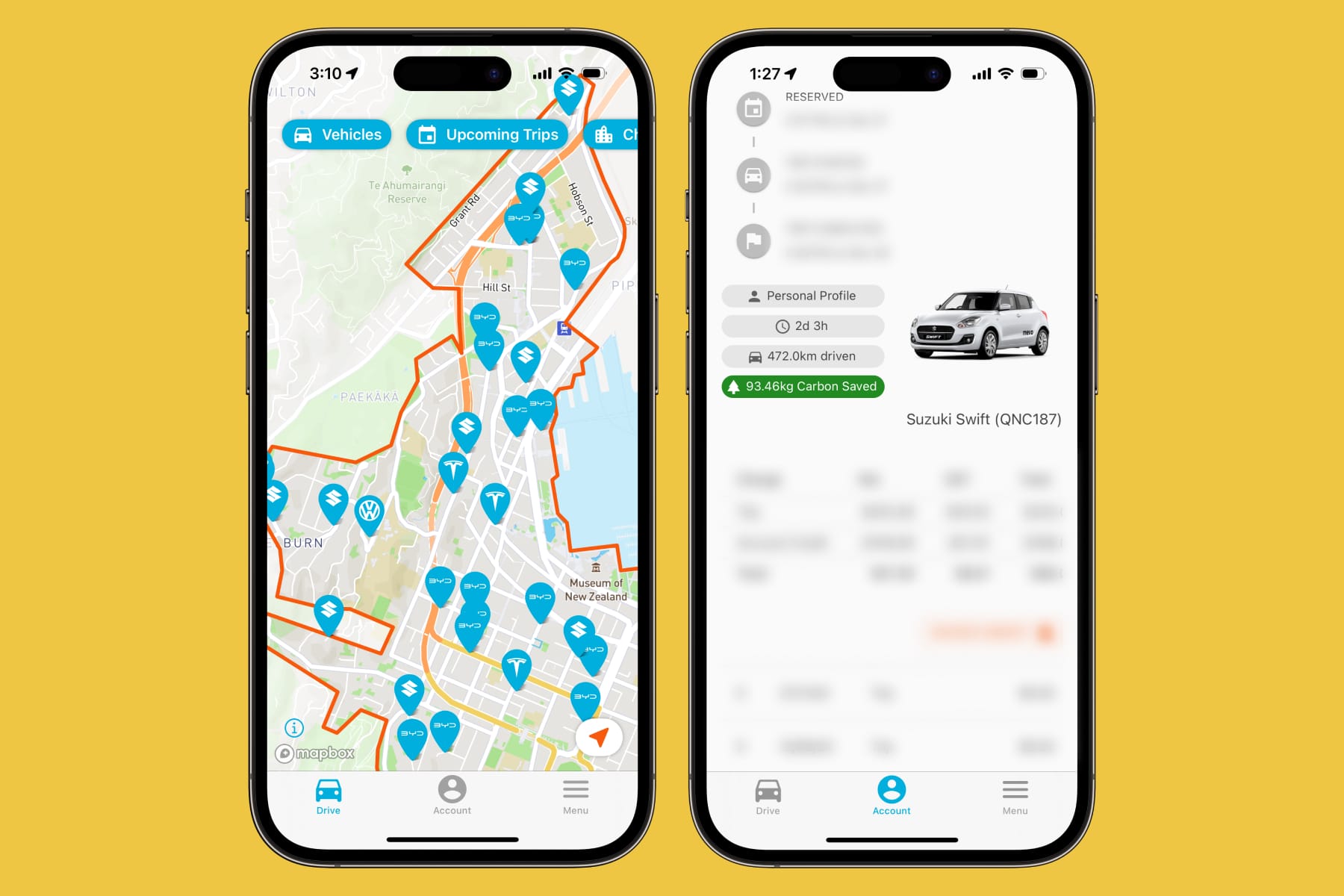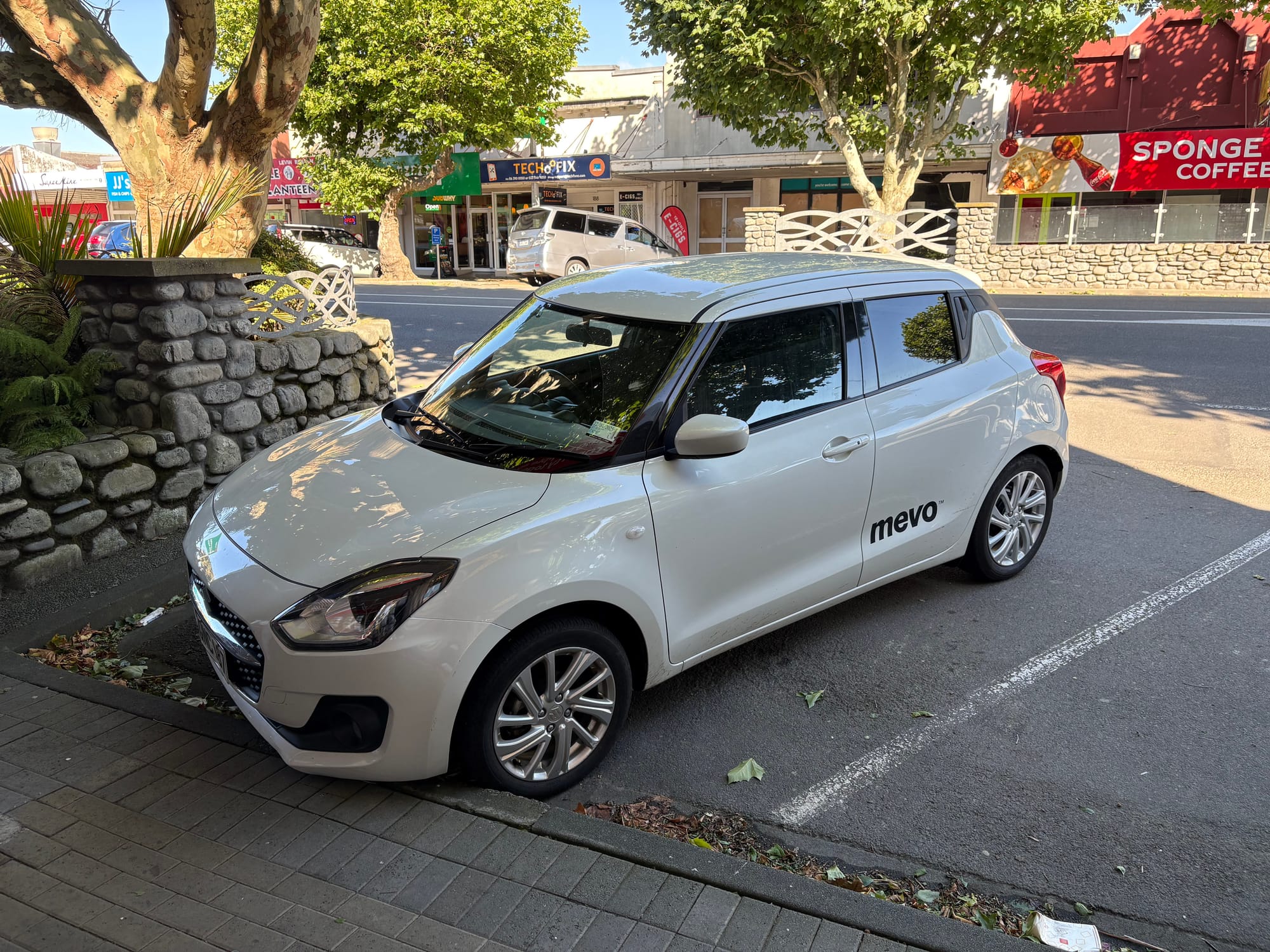Beyond ownership: how Mevo helps cars fit into 21st Century travel

Wellington has so many good things going. Its glistening harbour, dramatic weather, and stunning people make it my favourite place. I especially adore Wellington because it offers something nowhere else in New Zealand does: the choice to get around however I want.
Wellingtonians move around differently to the rest of New Zealand. We’re four times more likely to walk, bike, or bus to work. 40% of people drive to work, compared to 69% of New Zealanders as a whole.
We’re not built different: we get around differently because our council makes it easier to do so. When I get the groceries, it’s easy to walk. Getting to the train station is easy by bus. Errands in town are best done by bike.
Driving is best for some things, but my partner and I need to drive so infrequently that owning a car makes no sense. The cost of fuel and insurance and registration and parking and maintenance is eye-watering. It’s also a depreciating asset that, no joke, sits empty and unused for 95% of its life.
That’s before we even consider that New Zealand’s cars and utes alone create nearly 11% of our annual pollution.
Owning a car is too expensive unless you use it for everything. That’s probably why urban planners ripped the tram lines out of our towns in the 1950s to make way for carparks.
I don’t want to use a car for everything. I love biking and walking. I want to drive when I need to, not because I have to justify paying an arm and a leg to have the option.
Thankfully, a local company called Mevo offers the choice to drive without owning a car. I got my license exclusively to use their service. I excitedly worked with them for about six weeks at my last job. At Christmas, we took a Mevo to Whanganui. I can confidently say: Mevo is amazing.

How does Mevo work?
Mevos are cars dotted across the city which you can rent any time with your phone. I found a Suzuki Swift to take on our trip, and reserved it in the app. With one tap of a button, the car was instantly unlocked and ready to use with a full tank of petrol.
Mevo charges you based on how long you use the car. The Swift is their cheapest car, and it costs $18 an hour or $90 a day. Their charge covers everything: insurance, refuelling, registration, and parking once you’re finished with it.
When you really compare costs between Mevo and owning a car, Mevo is remarkably cheap. Buy a new Suzuki Swift with a personal loan and you’ll be paying $321 a week for five years just to have the luxury of owning it. I could have access to a Mevo for three full days a week for less than that, and I’d never have to pay for petrol.
Why would anyone swap to renting a car from owning one? Because the average New Zealander only drives their car one hour a day. 23 hours of the day, our cars sit doing nothing. We don’t need access to them all the time, yet we pay for them all the time. With Mevo, you only pay for when you drive. Instead of paying $321 a week plus fuel and other costs, you could drive exactly the same amount and pay just $126.
By choosing “as you need it” car access, you save money and get a nicer car. All of Mevo’s cars are flash. They’re modern petrol cars or super snazzy electric cars from Polestar, BYD, or Tesla. Considering the average New Zealand car is 14 years old, Mevos are a huge upgrade for most people.

Mevos are the best Christmas roadie opportunity
Mevo is an especially wonderful service for our Christmas trip: we took a car to drive to Whanganui at a fraction of the cost of owning a car or using a standard rental.
Whanganui used to be a public transport darling, but rebuilt itself to depend on private vehicles in the 1950s. They’ve started reviving their public transport but have a long way to go. Having a car is almost mandatory when visiting.
Mevo is a great regional travel option while we wait for the magic of railways to be rediscovered. We were able to explore all around town: we visited the iconic Durie Hill Elevator, parked near the main street and explored the riverside market, and visited the stunning new Sargeant Art Gallery.
The Suzuki we used is so modern that we racked up nearly 500km of travel and we didn’t even have to refuel. We got back to Wellington with a third of a tank. If we did refuel, Mevo would have covered the cost. With good access to EV charging in Whanganui, we could have easily used an electric car too.
Our trip to Whanganui and back created about 93kg of pollution: almost my entire bodyweight. Thankfully, Mevo offsets 120% of the pollution that comes from their cars. Every single gram will be sucked out of the air by trees that Mevo pays to plant.
We haven’t just used Mevo for big trips, we’ve used it for day-to-day stuff, too. Mevo is like caulk in a wall: it fills all the gaps in our transport system that buses don’t serve. Think tip shop trips, journeys past midnight to the Hutt, or picking up a TV. Mevo makes these journeys just as easy as when you own a car, without the need to pay for a WOF or insurance.
I can’t stress enough how wonderful Mevo is. They’ve made it possible to get into a car, drive, get out and never have to think about it again. It is an exciting glimpse at how cars fit into modern city travel.
Mevo shows us what a better transport system looks like.
Wellington is undergoing a radical transport transformation. It may not feel like it day to day but personal car ownership is becoming less necessary for Wellingtonians. Our trains will soon run every 15 minutes. Cheap bike lanes are unlocking safe access to our suburbs. Cargo bikes offer an awesome way to take kids around. The Council approved a historic amount of apartments to be built in the city with no parking requirements.
Driving will be more optional than it has been for a century, though there will still be some need for cars. In those moments, Mevo is the perfect solution. They offer peace of mind for the 5% of your life you need a car while saving you money for the 95% of the time that you don’t.
As Wellington transforms its streets, driving can transform with it. Mevo shows off a funny future where our grandchildren could look at our private cars and wonder why we all bothered owning one.
We each use cars so infrequently right now; why not share them?





